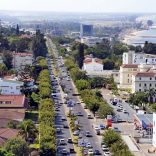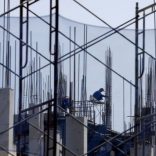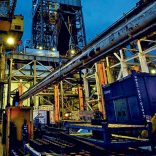Mozambique: Budget proposal projects 3.2% GDP growth for 2026
Mozambique: Decarbonisation of transport in Maputo to be underway by 2030

File photo: Lusa
Mozambique’s government plans to start decarbonising transport in the Maputo metropolitan area by 2030, with the focus on introducing gas and electric vehicles, according to the Energy Transition Strategy (ETS), to which Lusa had access on Tuesday.
The document approved by the government recalls that Mozambique “relies heavily on imported fuels” to supply the transport sector, with a “negative impact on the balance of payments” – exposing the country “to exchange rate and price fluctuations” as well as resulting in carbon dioxide emissions.
“In 2020, 100% of the diesel and petrol used in transport was imported, resulting in a cost of 482 million dollars [€449 million], which is equivalent to 8% of imports that year and 3% of GDP,” it explains, referring to gross domestic product. “The transport sector is responsible for 84 per cent of domestic fossil fuel consumption.”
The new strategy, which foresees investments of around $80 billion (€73 billion) by 2050, provides, in one of its plans, for urban transport, “the transition to public transport modes” in metropolitan areas, including mass transport such as surface metro, suspended rail systems and bus rapid transit (BRT), starting with the Maputo metropolitan area.
“In the short and medium term, compressed natural gas will be used as a transition fuel, as systems and volumes gradually switch to grid-powered renewable modes,” it reads. “In road transport, the transition from diesel/petrol in private passenger and freight transport implies a transition to biofuels (as transition fuels) and electric vehicles.”
The decarbonisation of urban transport is to start by 2030 in Maputo “with the introduction of BRT and other mass public transport, and with 15% of public transport using cleaner energy sources instead of diesel,” the document explains, going on to foresee that by 2040 “this figure will rise to 50% of urban public passenger transport in the Maputo metropolitan area, while the share in the north/centre rises to 15% and 7.5% in the remaining urban centres in the south of the country.”
The decarbonisation of road transport, with the transition to electric vehicles, “will begin in 2030, with 1% of private road transport and 5% of road freight transport [to be] powered by the grid” – that is, by electricity much of which comes from hydro-electric generators.
The combined penetration rate of electric vehicles and natural gas vehicles “will reach 3% for private road transport and 1% for road freight transport” by 2040, according to the government’s forecast in this strategy.
In terms of decarbonising rail transport, the government is aiming for a “gradual transition from diesel railways to renewable electricity”, starting by 2030 “with the doubling and electrification of the line south of Ressano Garcia” where the main crossing point on the border with South Africa is located.
“It is continuing with the increase in capacity and the expansion of electrification to 50% of the railway lines in the south, centre and north of the country and the construction of the north-south railway line,” the document states, while stressing that the expansion and electrification schedule “is conditional on simultaneous railway electrification in neighbouring countries linked by rail to Mozambique.”
Mozambique’s president, Filipe Nyusi, said at the climate summit in December that the ETS would put the country at the “forefront of climate innovation.
“This initiative not only puts Mozambique at the forefront of climate innovation, but also positions it as an attractive sustainable investment destination,” said the head of state, after speaking on 2 December at one of the panels at the United Nations climate summit (COP28) in Dubai.












Leave a Reply
Be the First to Comment!
You must be logged in to post a comment.
You must be logged in to post a comment.